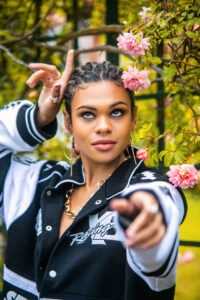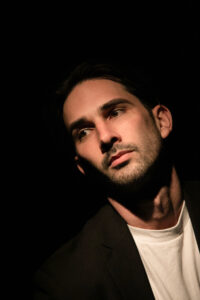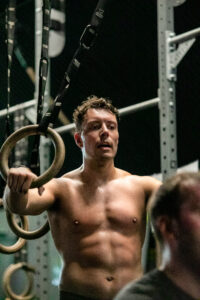5 Tips for Model Headshots to Help You Get the Best Out of Your Photography
By louis | Uncategorized | No CommentsExplore our 5 tips to improve your model headshots
In modelling, your headshot is your calling card. It’s the first impression casting directors, agencies, and photographers have of you. A killer headshot can land you gigs, while a mediocre one can keep you in the shadows. The pressure is real, but with the right approach, you can consistently deliver headshots that highlight your best angles and personality.
So how do you make your headshot unforgettable? Here are 5 expert tips to ensure your headshot stands out in a sea of faces.
1. Know Your Angles—and Work Them
Not every model looks their best from a straight-on angle. Discovering your best angles can make a world of difference in your headshots. Practice in front of a mirror or work with a photographer to find which side of your face is more flattering, which angles highlight your jawline, and how subtle movements can enhance your features.
Slight head tilts or shifts in your body can drastically improve the outcome of your photos. Once you know your angles, you’ll feel more confident in front of the camera and be able to serve up those powerful looks effortlessly.
Actionable tip: Always try a slight head tilt or turn to the side—this adds dimension and keeps the shot from feeling too flat.
2. Focus on the Eyes—They Tell the Story
In a model headshot, your eyes need to connect with the viewer. It’s all about creating a sense of intensity and emotion that draws people in. Whether you’re aiming for a fierce look or a more approachable, warm vibe, the energy comes from your eyes. Practice different expressions that feel authentic, not forced.
Here’s a trick: Think about a specific scenario or emotion as you pose—this helps your eyes communicate real feelings rather than looking blank or disengaged. Confidence, mystery, or even vulnerability can all come through your gaze with the right mindset.
Pro tip: Slightly squinting (also called “smizing,” a term popularized by Tyra Banks) can add an extra layer of intrigue to your shot without losing that all-important connection.
3. Nail Your Expression: Relaxed Yet Intentional
While it’s tempting to think you need a big, bold expression for every shot, the magic of a headshot often lies in the subtlety. A natural, relaxed expression is key to letting your face do the talking. Poses should feel effortless and authentic. A stiff smile or overly posed look won’t connect as well.
Find that sweet spot between too serious and too smiley. Think confident, calm, and in control. Want to try a smile? Go for a soft, genuine one—avoid overly broad grins that can feel out of place in a high-fashion context.
Actionable tip: Keep your lips relaxed. Whether smiling or neutral, slightly parting your lips can make your expression feel more natural.
4. Perfect Your Posture—It Shows Confidence
Posture is a silent power player in headshots. A strong, upright posture exudes confidence and professionalism, while slouching can undermine the strength of your expression. Keep your shoulders back and your spine straight, but stay loose and relaxed so you don’t appear rigid.
Think of elongating your neck and lifting your chin slightly. These small adjustments can make a big difference in how your headshot comes across—more refined, polished, and editorial.
Pro tip: Avoid tensing up! Take a deep breath between shots to stay loose and keep your posture naturally strong.
5. Wardrobe and Makeup: Keep It Simple, Let Your Face Shine
While wardrobe and makeup are essential in a full-body shoot, for headshots, less is more. The focus should always be on your face, so stick to neutral or solid-colored tops that won’t distract from your expression. Avoid bold patterns or flashy accessories—they pull attention away from your eyes and face.
As for makeup, go for a look that enhances your natural beauty. Choose light foundation, defined brows, and soft contouring to highlight your features. Bold, trendy makeup looks can date a headshot quickly. Clean and polished will always work in your favor, especially if you’re submitting these headshots to agencies or clients.
Actionable tip: Bring multiple wardrobe options—something simple, but versatile. A plain black or white tee is a classic choice that never fails.
Final Thoughts
Serving face in a model headshot is about more than just posing—it’s about knowing how to make your features pop and creating an emotional connection with the viewer. With these five tips, you’ll be well on your way to nailing every headshot with confidence and style. Whether it’s your first shoot or your hundredth, these fundamentals will help you serve face and land that next gig.
Ready to step in front of the camera? It’s your time to shine!




